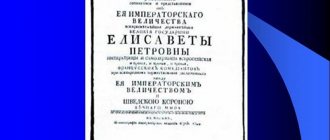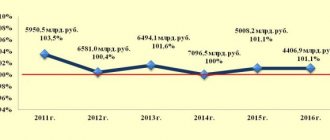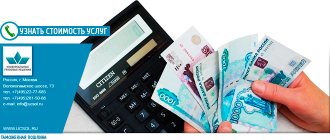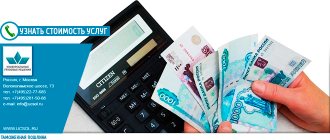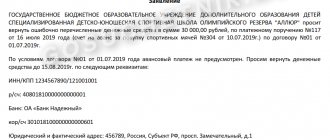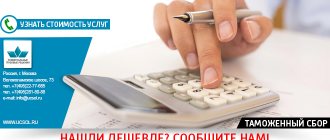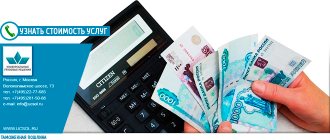The abolition of internal customs duties in the Russian Empire removed obstacles to the development of trade. This reasonable decision was made during the reign of Elizabeth, daughter of Peter the Great. There were compelling reasons for the elimination of trade barriers within the country. The presence of customs posts on Russian roads infringed on the interests of the merchant class and adversely affected the state of the economy of the empire. A law passed in 1754 completely changed this situation.
The reign of Elizaveta Petrovna
The accession of the new empress to the throne changed the views of the ruling elite on the country's economic problems and ways to solve them. During the reign of Elizabeth Petrovna, it became obvious that one of the most serious obstacles to the development of domestic industry and trade was the internal customs system. There were 17 different duties that merchants were forced to pay when transporting goods within the territory of the Russian Empire.
What is used for calculation
The calculation of the type of duty under consideration is carried out based on data on customs value for 2021. The latter can be calculated according to certain indicators:
- The value of the current transaction with products sent for export.
- The price of a transaction with the same type of product.
- The cost of the process with cargo of similar or homogeneous types.
- Sum of prices.
- Cost differences.
The cost calculation, which is considered the most relevant today, takes place on the financial side of the transaction. The calculation must necessarily include data on rates for export products, which directly depend on the type of cargo.
The calculation of the rate (ad valorem variety) occurs by multiplying the rate of the goods redirected outside the country by the cost of the customs type. In addition, there are other types: combined, as well as specific.
An approximate calculation of the first variety under consideration is as follows:
- The organization exports gemstones with a total value of $100,000.
- The rate is 10%.
- Accordingly, $10,000 is a duty
If the calculation is based on a rate of a specific type, then it must be multiplied by the tax base. When exporting 10,000 liters of a certain brand of alcoholic beer, the value will be one dollar per liter, and the duty will be equal to 10,000 dollars. If the calculation is based on a combined type rate, then a larger duty is selected from the calculations of the rates of the two previous types.
In general, we can summarize: the calculation of duties is carried out by determining the rates and costs.
The state determines the rates, and the method of calculation depends on their type. Absolutely every product has its own rate determined, and the amount of duty due to various benefits and established quotas is significantly reduced.
Customs procedure “Export” (EC 10)
Bill
The initiator and inspirer of the reform of the customs system was Count Pyotr Shuvalov. This statesman actually led the government of Elizabeth Petrovna. Count Shuvalov prepared a project for the abolition of internal customs duties. He presented a report to the Senate justifying the need for this reform. The main goal of lifting restrictions on the transport of goods within the country was to increase revenues to the state treasury. The project to abolish internal customs duties received approval from the Senate. It became the basis of the law approved by Elizaveta Petrovna.
Time limits for placing goods under the customs procedure
The term for placing goods under the customs procedure means a limited period of time for which the declarant places the cargo under the selected regime, providing a product declaration for this.
This period depends on the type of customs procedure and can be extended by decision of the customs authority. For example, it can take up to four months to release goods for domestic consumption, the maximum period for customs transit is limited to 2 thousand kilometers per month, and for re-export the maximum period is two years.
The terms for placing goods under the customs procedure are determined in the EAEU Customs Code or by decisions of the commission, depending on the type of regime.
Lack of a common market
At that time, the Russian Empire was a single political and administrative space, divided by economic borders. This made the costs of moving goods within the country unreasonably high. Numerous fees and transportation costs could add up to half the cost of the goods. This caused sharp discontent among the merchant class. Duties were collected in each province. In addition to the main fees, there were a large number of secondary ones. On average, there was one customs post for every 20 kilometers of travel.
Rates on alcohol and tobacco products
Table. Rates on alcohol and tobacco products in 2021
| Name of product | Bet size |
| Mineral water | 15%, but not less than 0.07 euros per 1 liter |
| Non-alcoholic beer | 0.6 euros per 1 liter |
| Malt beer | 0.6 euros per 1 liter |
| Sparkling wines, including champagne | 20 % |
| Vermouths, wines | 20 % |
| Undenatured ethyl alcohol with an alcohol concentration of less than 80 vol. | 100%, no less than 2 euros per 1 liter |
| Cognac, brandy, whiskey | 100%, no less than 2 euros per 1 liter |
| Tobacco with unseparated midrib | 5 % |
| Cigarettes, cigars | 30%, but not less than 3 euros of the cost of 1000 pieces |
| Smoking tobacco | 20 % |
Reasons for cancellation
The complex and confusing system of trade fees on the roads gave rise to corruption and abuse. The government did not have the resources necessary to eradicate these phenomena. From a practical point of view, establishing total control over customs officials was impossible. The only way to solve this problem was to completely eliminate the ineffective system. According to the author of the project for the abolition of internal customs duties, this was supposed to contribute to the explosive growth of trade and industry. In addition, Count Shuvalov proposed an alternative source of replenishment of the treasury. In his opinion, it was necessary to increase the fees imposed on export and import goods at the external borders of the state.
It is worth noting that the abolition of internal customs duties, approved by Elizabeth Petrovna, was a progressive step by the standards of the 18th century. In France and Germany, trade barriers within the territory of the state remained in place for several decades.
Cost of customs clearance services
How much it costs to complete a customs procedure depends on the selected mode, name and characteristics of the cargo. Contact our company: we will help you choose the most advantageous customs procedure, fill out a declaration, calculate mandatory payments, and perform other actions for smooth customs control.
Reliable, competent broker; your key to successful foreign economic activity.
Carrying out reforms
The abolition of internal customs duties in 1754 was carried out quickly and in an organized manner. All trade tolls on roads within the empire ceased. Only border customs remained, where duties on exports and imports of goods were increased to 13%. Tax amounts were calculated on the basis of a special table of standard prices for various types of raw materials and industrial products. The reforms did not lead to the eradication of corruption, but in general the abolition of internal customs duties in Russia achieved its goal.
Review of customs disputes for July 2021
Review of customs disputes for July 2021
Abbreviations: TO - customs authority, KTP - desk customs inspection, VTP - on-site customs inspection, TD - customs inspection, NLA - non-normative legal act, TP - customs payments.
The review did not include disputes regarding administrative violations, intellectual property, recycling fees, or the collection of damages from technical organizations in connection with the preparation of relevant thematic reviews.
307-ES21-14060 (A52-1066/2020)
Dispute: whether the imported product (compound feed) is a finished product or food additive and whether the VAT rate of 10% is applicable (Clause 2 of Article 164 of the Tax Code of the Russian Federation). There is no dispute about the incorrect definition of the HS code. The Supreme Court of the Russian Federation agreed with the conclusions of the lower courts, which established that the criterion for classifying a product as feed is its use as feed, and not as an additive. According to the manufacturer’s instructions (Hungary), his responses to requests from the customs authority and expert opinions, the imported product can be used both in its pure form and in the form of feed additives. The courts also took into account the opinion of the Supreme Court of the Russian Federation in case 308-ES20-719 that feed additives are publicly significant purposes and a VAT rate of 10% can be applied.
305-ES21-10477 (A40-15520/2020)
The Supreme Court of the Russian Federation agreed with the opinion of the courts that supported the declarant. The import of components for the tomograph is not subject to VAT (exempt from taxation) because according to Art. 150 of the Tax Code of the Russian Federation, the import into the territory of the Russian Federation of raw materials and components that are intended for the production of goods specified in paragraphs is not subject to taxation. 1 item 2 art. 149 of the Tax Code of the Russian Federation, and analogues of which are not produced in the Russian Federation. The courts took into account the social significance of the imported goods, as well as the list of medical goods not subject to VAT (according to Decree of the Government of the Russian Federation No. 1042 of September 30, 2015). Let us note that the goods in the form in which they were imported are not named in the Resolution.
305-ES21-10794 (A40-11596/2020)
The product is cigarettes, imported from the UAE. The first method for determining the value of goods has been declared (based on the contract price, Article 39 of the EAEU Labor Code). The TO, with reference to the procedure for declaring the customs value of goods No. 376 dated September 20, 2010, did not agree with this interpretation, conducted a technical inspection after the release of the goods, established the fact of undervaluation of the goods and decided to make changes to the information declared by the declarant. At the same time, the Customs Service sent a request to the competent authorities of the UAE, the response from which confirmed the customs’ doubts, which enabled the latter to apply method No. 6 “backup” (Article 45 of the EAEU Labor Code). Courts of all instances refused to recognize the declarant’s actions as illegal.
308-ES21-10757 (A63-9959/2019)
Requirement: invalidate the decision on the classification of goods and return the customs duties paid. Product: Aluminum oxide other than artificial corundum, customs duty rate – 0%. The customs authority took samples and carried out an examination, as a result of which the regulatory authority changed the type of imported goods to “artificial corundum”, the rate is 5%. The courts, analyzing the customs examination, found a number of flaws in it and, as a result, refused to accept it as evidence. A forensic examination was appointed, which confirmed the correctness of the choice of the HS by the declarant. The Supreme Court of the Russian Federation agreed with the conclusions of the courts.
307-ES21-9565 (A44-9221/2019)
The applicant in the case was the TO to the Federal Agency for State Property Management. Demand: to recognize as illegal the inaction of the Federal Agency in connection with the failure to accept for disposal the detained goods, in connection with the appeal of creditors' claims to the property in a previously initiated bankruptcy case of the owner of the goods. At the same time, the goods themselves did not undergo the necessary customs procedures. Due to the termination of the owner’s active actions to fulfill his duties under customs legislation, the goods were detained and presented to the FA for further sale, which the bankruptcy trustee opposed. With reference to the opinion of the judges of the Supreme Court of the Russian Federation in case 310-ES19-8482, the courts came to the conclusion that if administrative (customs) procedures are not carried out in full, then the goods have not acquired the status of being located on the territory of the Customs Union and, therefore, the rules of bankruptcy legislation in it is not distributed. The goods are subject to sale in favor of the state.
305-ES21-10217 (A40-93899/2020)
Dispute about exclusion from the register of a customs representative. The company was excluded from the register due to failure to fulfill its joint and several obligation to pay the TP. At the same time, the applicant deposited the necessary funds with the arbitration court, believing that the court itself would transfer these funds to the TO. But this kind of procedure is not provided and the funds were not received in the TO accounts within the prescribed period. Thus, the basis for exclusion from the register was failure to fulfill the obligation provided for in paragraph 4 of Art. 405 EAEU Labor Code. The conclusions found support in the RF Armed Forces.
307-ES21-10086 (A52-4515/2019)
Only the cassation court, whose opinion was shared by the RF Supreme Court, recognized the customs authority’s regulatory legal acts as invalid and the actions of the declarant as justified. Dispute over classification of goods. An aviation ladder was imported into the territory of the Customs Union. The TO insisted that the ramp does not have a gearbox and controls, and these are “Special Purpose Motor Vehicles” with a rate of 5%. According to the applicant, the ladder falls under the category of “Machines and mechanical devices having individual functions” with a customs duty rate of 0%. The manufacturer's explanations were requested and an examination was carried out, but only the cassation court came to the conclusion that the ladder is a single mechanical unit, has a single electronic circuit, a supporting structure, the chassis is not universal and does not have independent use. Thus, the court of third instance stated that the TO did not prove the validity of the change in the HS for the imported goods. It should be noted that the court of first instance agreed with the arguments of the TO that a ladder without removable parts does not mean it is monolithic, a ladder installed on the chassis does not participate in ensuring movement, and a gearbox is the same as a classic box transmission
303-ES21-10965 (A51-2080/2020)
The company challenges the decision of the Customs Service on the correctness of the customs value of goods. The imported goods are “pneumatic rubber tires with speed index E.” The Supreme Court of the Russian Federation agreed with the opinion of the lower courts, which rejected the claims made by the declarant, for the reason that the TC established the fact of providing false information, which resulted in non-payment of anti-dumping duties. After conducting an examination, the technical department established the fact of making changes to the labeling of the imported goods by mechanically removing the surface layer. In addition, by analyzing Internet resources, the TO found sites with similar products presented for sale with controversial tire markings and justifiably made a contested decision. The court gave a critical assessment to the certificate for imported products presented by the applicant.
305-ES21-9329 (A40-306849/2019)
The second case considered in July by the RF Supreme Court was about customs payments in relation to animal feed. The company challenged the decision of the technical department to amend the stated information. The product is a feed additive used to optimize digestion in animals. According to the declarant, the customs duty rate is 5%, the VAT rate is 10%. After the release of the goods, the TO carried out an inspection of the documents, as a result of which the TO considered the applicable VAT rate to be 20% (clause 2 and clause 5 of Article 164 of the Tax Code of the Russian Federation, Decree of the Government of the Russian Federation No. 908 of December 31, 2004). The courts indicated that When using the “list” set out in Resolution 908, it is necessary to be guided by both the HS code and the name of the product, and only if the “list” meets both criteria, the VAT rate of 10% can be applied. The technical information was analyzed - safety data sheets of the imported product, instructions for use, and since the imported product turned out to be an additive for optimizing digestion processes, the product is not a finished product, but should be used as a feed additive. The disputed goods are not named in the list, and, therefore, the VAT rate is 20%. The courts referred to a similar opinion of the RF Supreme Court in cases 303-KG18-10893, 309-KG18-3403, 308-KG18-13197.
301-ES21-10799 (A43-12323/2020)
Imported product: “Linear guide”. The dispute concerns whether linear guides or bearings belong to the HS. Upon request, a letter from the seller was provided with the characteristics of the imported goods. Against the background of significant technical characteristics, the court of first instance, with whose opinion all higher courts including the Supreme Court of the Russian Federation agreed, drew attention to the fact that the disputed unit does not have a mandatory, in such cases, characteristic for inclusion in the position approved by the technical department - the outer diameter of the imported part, from which in turn, the definition of the subheading depends (8482 10 100 or 8482 10 900). And he indicated that the criterion for assessing the validity of assigning goods to a certain sub-item of the nomenclature is the functional purpose of the product, which expresses its objective properties. The TO did not provide evidence of the possibility of any other independent use of the disputed product. The TO's expert opinion did not play a significant role in the courts' conclusions.
305-ES21-14205 (A40-161540/2020)
The declarant made advance payments towards upcoming customs payments. A temporary customs declaration has been submitted. Subsequently, the delivery of goods was canceled and the declarant withdrew the temporary declaration and applied for a refund of payments, but the TO refused due to missing the one-year deadline (Part 2 of Article 148 of the Federal Law No. 311-FZ). The court noted that in this case, protection can be carried out either by challenging the legal acts within a period of 1 year, or by claiming a property nature with a period of 3 years, in the absence of the need to comply with an administrative procedure. The court, with reference to the opinion of the Constitutional Court of the Russian Federation regarding overpayment of tax payments and their return, recognized that from the date of withdrawal of the declaration the declarant had the right to return the advance payments made, the period of the right of claim had not expired and declared the refusal of the tax authority invalid.
304-ES21-10985 (A45-2133/2020)
The Company believes that the customs authority unlawfully classified the disputed goods in heading 8482. The declarant declared the goods to be (in brief) a turntable, used to transfer complex loads from the rotating frame of the crane to the chassis. Commodity Nomenclature of Foreign Economic Activity of the EAEU - 8431 49 800 9. The justification is provided: contract, specification, invoice, photographs and technical description of the goods. The TD conducted established that the product is supposedly a turntable made of metal, gray in color, having teeth in one row on the inner part along the circumference and holes along the circumference. TO decided to classify the goods in subposition 8482 50 000 9 of the EAEU Commodity Classification of Foreign Economic Activity “Ball or roller bearings” (TP rate - 10%). The reason for this conclusion was, not least of all, the order of the Federal Customs Service of Russia dated August 15, 2014 No. 233-r “On the classification of individual goods according to the Commodity Nomenclature of Foreign Economic Activity of the Customs Union”, where clause 111.2 states that separately supplied parts that are themselves goods classified in one of the headings are in all cases classified in certain headings, even though these parts are specially designed for use in specific machines and devices. In particular, this applies to ball and roller bearings, polished steel balls (commodity item 8482 of the CU FEACN). The court noted that the name of a part or assembly assigned by a specific manufacturer in accordance with the function it performs cannot serve as a basis for classification in accordance with the EAEU Commodity Nomenclature for Foreign Economic Activity. The court also examined information from the manufacturer’s website, his letters and summarized that the product is a roller slewing bearing. Among other things, the court had to turn to the information contained in the Big Polytechnic Encyclopedic Dictionary about “gear transmission”.
The court did not take into account the applicant’s reference to preliminary decisions on the classification of goods issued by the customs authorities of the Republic of Belarus, since in accordance with paragraph 4 of Article 21 of the EAEU Labor Code, preliminary decisions on the classification of goods are applied on the territory of the EAEU member state whose customs authorities made such preliminary decisions on the classification of goods.
307-ES21-14055 (A56-68722/2020)
Goods imported: polymer, medical gloves. The TO, with reference to letters from Roszdravnadzor about the lack of registration of a medical device, insisted that the VAT rate applied in this case should be 10% in accordance with the Decree of the Government of the Russian Federation of September 15, 2008. No. 688 “On approval of lists of codes of medical goods subject to value added tax at a tax rate of 10%.” The dispute concerned the description and characteristics of the product. The court, siding with the declarant, indicated that the TO was unable to prove the relevance of Roszdravnadzor’s letters to the dispute under consideration. A response from the product manufacturer was provided clarifying the characteristics. The decisions of the courts of all instances, including the Supreme Court of the Russian Federation, were in favor of the declarant.
303-ES21-11595 (A51-13118/2020)
The company is challenging the decision of the technical department on the classification of the goods. A media center was imported, classified under the HS code 8517 62 000 3, which most specifically, in the opinion of the declarant, describes the goods. The corresponding TP rate is 0%. Based on the examination, the TO concluded that the imported goods were a television set-top box with a multimedia function and changed the code to 8528 71 910 0 TN VED, implying a TP rate of 10%. The courts once again noted that when classifying goods it is necessary to proceed from the unique properties of the product and its intended purpose. The court of first instance analyzed and reflected in the decision the description of the goods from the manufacturer, which was compared with the explanations for the product items, as a result of which, and taking into account the absence of a video display, the court recognized the decision of the technical department as correct. The decision was supported by the highest authority.
305-ES21-4140 (A40-269134/2019)
Ensuring payment of customs duties. The RF Supreme Court overturned the appeal and cassation decisions and upheld the decision of the court of first instance. The insurance company is challenging the decision of the Customs Service to impose the obligation to pay TP in connection with the guarantee agreement to ensure the payment of customs duties. The debtor himself did not fulfill his obligations. The applicant argued that due to the expiration of the period for which, according to the contract, the guarantee was provided, the insurance company was not obliged to pay for the TP. The court of first instance refused to invalidate the decision, considering that since the event took place during the period of validity of the contract, the period had not expired. Canceling the decision and recognizing the correctness of the insurance company, the appellate instance, referring to Art. 367 of the Civil Code of the Russian Federation, indicated that the expiration of the term is an independent basis for termination of the guarantee agreement, and therefore, TO had no right to demand, since by the time the demands were made, the term of the agreement had already expired. The Court of Appeal mentioned paragraph 5 of the information letter of the Supreme Arbitration Court of the Russian Federation No. 28 dated January 20, 1998, with which the cassation instance agreed. Canceling the decisions of both previous instances and agreeing with the assessment of the court of first instance, the Supreme Court of the Russian Federation noted that although the term of the agreement had expired, the legal relations that served as the basis for issuing the TO requirements arose during the period of its validity. The insurance company denied the stated demands.
307-ES21-14450 (A56-32151/2020)
The declarant disputed the TO’s refusal to return the overpaid TP. The cassation, later supported by the Supreme Court of the Russian Federation, overturned the decision of the appeal (which, with reference to clause 6 of Federal Law No. 101-FZ of July 15, 1995, indicated that ratified international treaties are binding on the Russian Federation) and agreed with the decision of the first instance, which refused to invalidate the legal acts . The imported product is palm oil. Dispute over the application of a preferential rate of 5% under the protocol of December 16, 2011 to the Marrakesh Agreement. According to the TO, the company did not attach documents confirming the changes stated in the DT, but only referred to the Marrakesh Agreement. With reference to decisions of the Council of the Eurasian Economic Commission No. 54 of 07.16.2012 and the Treaty on the EurEC of 05.29.2014 (in this part of the issues manifested in Council decision No. 64 of 02.22.2019 “On the establishment of tariff preferences” ). The cassation court referred to paragraph 5 pl. 49 – the rates are the same and do not change depending on the individual.
301-ES21-12002 (A43-14922/2020)
Export. The refusal to return overpaid TP was challenged. The appeal overturned the decision of the first instance and refused to invalidate the legal acts. The Cassation Court and the Supreme Court of the Russian Federation agreed with the conclusions of the second instance. The company removed the wooden poles and requested the return of the overpaid TP. To this requirement, the TO indicated that more than three years had passed, the demand could not be satisfied (Article 73 of the Federal Law No. 289-FZ), as well as the application was not made to the proper TO (at the place of declaration). The appeal indicated that rates are set for goods, and not for product codes, and drew attention to the declarant’s incorrect interpretation of Resolution No. 754 of August 30, 2013 “Export customs duties.”
310-ES21-11919 (A09-7794/2018)
All courts agreed with the declarant. The TO notification about unpaid TP was disputed. A technical technical review was carried out on the issue of the reliability of the declared information, establishing a VAT rate of 18% and changing the HS code. The applicant went to court. The product is an electric generating set of more than 750 kW. The customs examination was criticized by the court for probabilistic conclusions.
307-ES21-11753 (A56-49515/2020)
Export. The courts, including the Supreme Court of the Russian Federation, refused to recognize the legal acts as invalid. The product is scrap ferrous metals. The TO identified deficiencies in the declared information, requested additional information and applied method No. 6 “Reserve” (Article 45 of the EAEU Labor Code). The applicant did not submit the requested documents; he stated that the amount paid by the buyer under the international contract and the TO information about similar goods cannot be grounds for refusal to apply the first method (at the contract price, Article 39 of the EAEU Labor Code). The inspection revealed unreliable information, interdependence of the seller and the buyer, and a significant deviation of prices from the information from the inspection database. Information on stock exchange quotations for exported goods, cost estimates, accounting documents on costs, and documents for the receipt of goods were not provided. Documents for purchasing goods on the territory of the Russian Federation, payment and settlement documents were not presented. The declarant did not provide the reason for the inability to provide the requested documentation.
307-ES21-12022 (A56-101009/2019)
A manual steamer was imported, declared as “steam blasting machines, sandblasting machines”, subgroup – “other” HS 8424 30 900 0. The TO requested additional documents from the declarant. The declarant also presented a certificate for the imported goods, where, when registering it, he indicated the HS code 8516 79 700 0 “electric heating devices.” Others." The TO carried out the QTP and insisted that it was necessary to focus on the characteristics of the product that most specifically correspond to the classification criteria in the commodity item of the Commodity Nomenclature of Foreign Economic Activity. The court refused to accept the conclusions of the examination, since the codes specified in the conclusion are not mandatory for the classification of goods (Clause 4 of Article 20 of the EAEU Labor Code) and supported the conclusions of the TC, with which the Supreme Court of the Russian Federation fully agreed.
